The Indus Valley Civilization
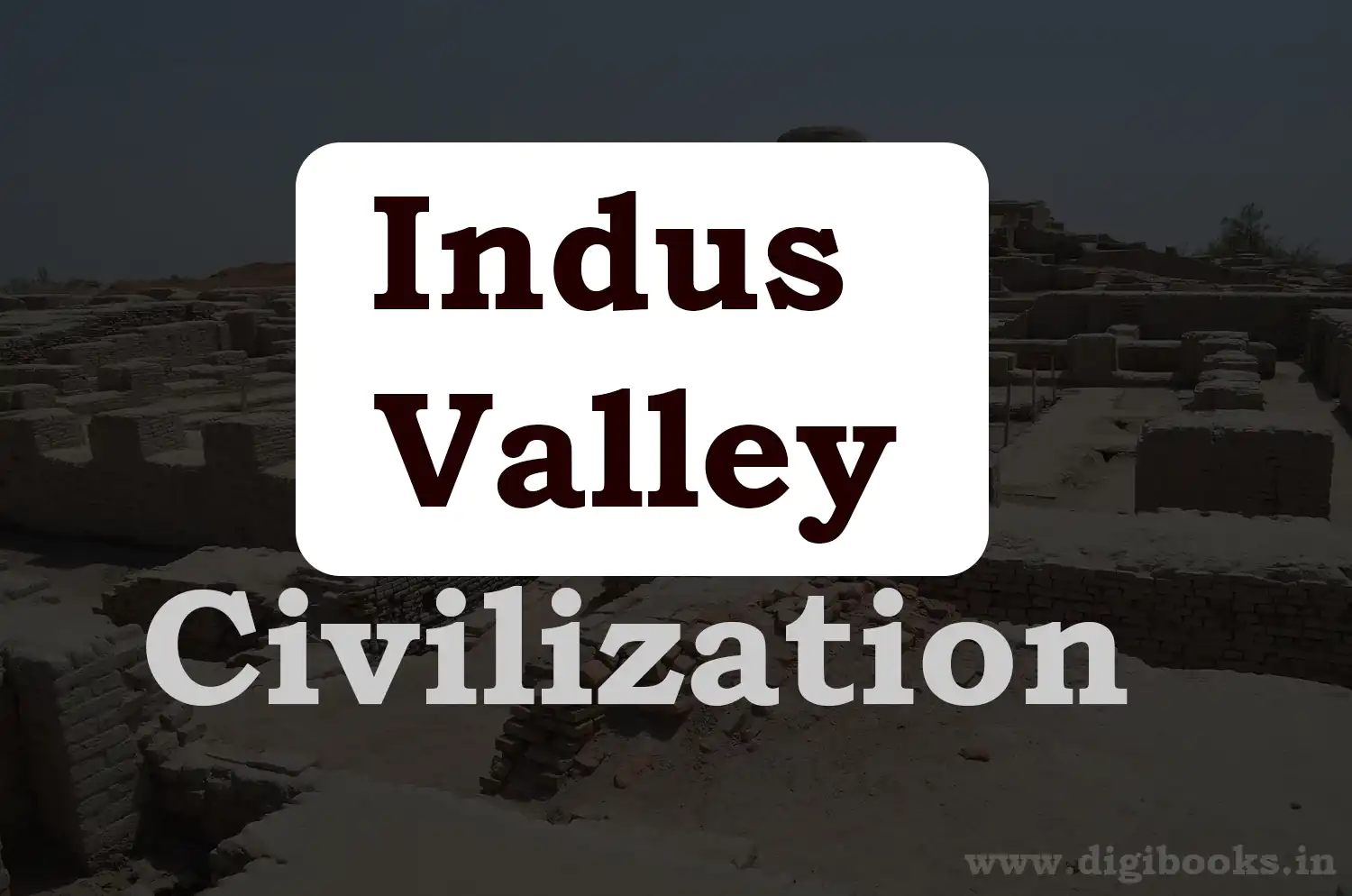
The Indus Valley Civilization
The Indus Valley Civilization was a cultural and political entity that existed in the northern Indian subcontinent from approximately 7000 and 600 BCE. Its present name stems from its location in the Indus River valley, although it is also known as the Indus-Sarasvati Civilization and the Harrapan Civilization.
These later names are derived from the Sarasvati River recorded in Vedic literature, which ran near to the Indus River, and the ancient city of Harappa in the area, the first discovered in the modern age. None of these names are derived from ancient documents because, despite the fact that academics think the inhabitants of this civilisation established a writing system (known as Indus Script or Harappan Script), it has not yet been decoded.
All three classifications are recent constructions, and nothing is certain about the civilization's birth, progress, decline, and demise. Nonetheless, contemporary archaeology has determined a possible chronology and periodization:
Pre-Harappan – c. 7000 - c. 5500 BCE
Early Harappan – c. 5500 - 2800 BCE
Mature Harappan – c. 2800 - c. 1900 BCE
Late Harappan – c. 1900 - c. 1500 BCE
Post Harappan – c. 1500 - c. 600 BCE
TOTAL POPULATION OF THE CIVILIZATION IS THOUGHT TO HAVE BEEN UPWARD OF 5 MILLION, & ITS TERRITORY STRETCHED OVER 900 MILES (1,500 KM) ALONG THE INDUS RIVER.
The Indus Valley Civilization is often frequently likened to the considerably more famous cultures of
Egypt and Mesopotamia, but this is a very recent phenomenon. The discovery of Harappa in 1829 CE was the first hint that such a civilisation existed in India, and by that time, Egyptian hieroglyphics had been decoded, Egyptian and Mesopotamian sites had been unearthed, and cuneiform would soon be translated by the scholar George Smith (l. 1840-1876 CE). Archaeological excavations of the Indus Valley Civilization began relatively late, and it is now recognised that many of the accomplishments and "firsts" credited to Egypt and Mesopotamia may really belong to the inhabitants of the Indus Valley Civilization.
The two most well-known excavated cities of this culture are Harappa and Mohenjo-daro (both in modern-day Pakistan), both of which are thought to have once had populations of 40,000-50,000 people, which is astounding when one considers that most ancient cities had an average population of 10,000 people. The civilization's entire population is estimated to have been over 5 million people, and its territory spread for nearly 900 miles (1,500 km) along the banks of the Indus River and then in all directions outward. Sites of the Indus Valley Civilization have been discovered near Nepal's border, in Afghanistan, on India's beaches, and in the vicinity of Delhi, to mention a few.
Between 1900 and around 1500 BCE, the civilisation began to decline for unknown causes. Western academics in the early twentieth century CE believed that this was caused by an invasion of light-skinned peoples from the north known as Aryans who conquered a dark-skinned people known as Dravidians. The Aryan Invasion Theory, as it is called, has been discredited. The Aryans, whose ethnicity is linked to the Iranian Persians, are now seen to have peacefully migrated to the region and integrated their culture with that of the locals, whereas the term Dravidian now refers to anybody, of any ethnicity, who speaks one of the Dravidian languages.
Scholars think climatic change, the drying up of the Sarasvati River, a shift in the route of the monsoon that irrigated crops, city overcrowding, a drop in commerce with Egypt and Mesopotamia, or a combination of the above, caused the decline and fall of the Indus Valley Civilization. Many of the sites uncovered thus far are still being excavated, and future finds may provide further information on the culture's history and decline.
Discovery & Early Excavation
The symbols and inscriptions on the items of the Indus Valley Civilization, which some experts have interpreted as a writing system, remain untranslated, and archaeologists generally avoid pinpointing the culture's origin because any attempt would be speculative. At the moment, all that is known about the society is based on concrete evidence unearthed in various locations. As a result, the storey of the Indus Valley Civilization begins in the nineteenth century CE with the discovery of its remnants.
When he left with another soldier in 1827 CE, James Lewis (better known as Charles Masson, l. 1800-1853 CE) was a British soldier serving in the East India Company Army's artillery. To avoid detection by authorities, he changed his name to Charles Masson and embarked on a series of excursions around India. Masson was an avid numismatist (coin collector) who was particularly fascinated in antique coins. After following various clues, he ended up exploring historical spots on his own. One of these sites was Harappa, which he found in 1829 CE. He appears to have left the region soon after noting it in his notes, but because he had no clue who may have built the city, he wrongly attributed it to Alexander the Great during his campaigns in India around 326 BCE.
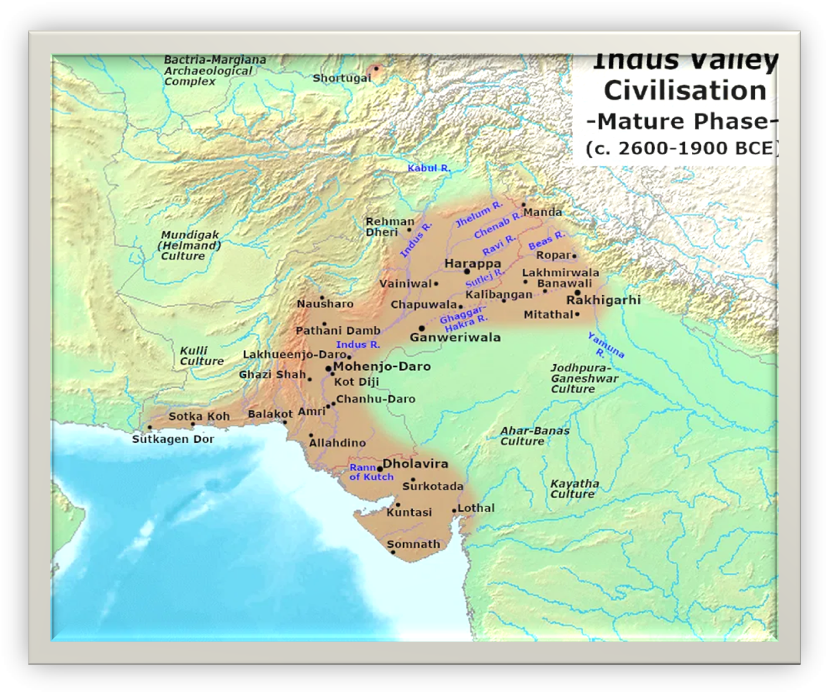
When Masson returned to Britain after his adventures (and having been somehow forgiven his desertion), he published his book Narrative of Various Journeys in Balochistan, Afghanistan and the Punjab in 1842 CE which attracted the attention of the British authorities in India and, especially, Alexander Cunningham. Sir Alexander Cunningham (l. 1814-1893 CE), a British engineer in the country with a passion for ancient history, founded the Archaeological Survey of India (ASI) in 1861 CE, an organization dedicated to maintaining a professional standard of excavation and preservation of historic sites. Cunningham began excavations at the site in 1875 CE and published his interpretation (in which he recognised and called the Indus Script), but this was incomplete and lacked definition since Harappa remained isolated, with no connection to any known ancient culture that may have produced it.
In 1904 CE, a new director of the ASI was chosen, John Marshall (l. 1876-1958 CE), who subsequently visited Harappa and declared that the site constituted a previously undiscovered ancient civilisation. He ordered that the site be thoroughly excavated at the same time that he learned of another site some miles distant known as Mohenjo-daro ("the mound of the dead") because of animal and human bones discovered there, as well as other artefacts. Excavations at Mohenjo-daro began in 1924-1925, and commonalities between the two sites were identified; the Indus Valley Civilization had been discovered.
Harappa & Mohenjo-daro
Western scholars were already familiar with the Hindu literature known as the Vedas, as well as other important works of Indian tradition such as the Mahabharata and Ramayana, but they had no idea what culture had developed them. Systemic racism at the time prohibited them from attributing the achievements to the people of India, and this led researchers to believe that Harappa was a Mesopotamian Sumerian colony or maybe an Egyptian outpost.
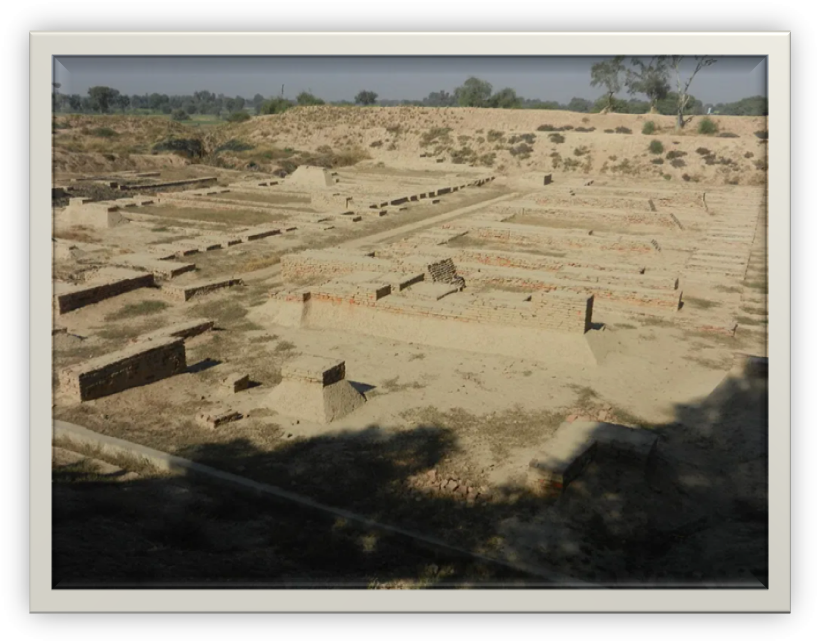
Harappa, on the other hand, did not adhere to either Egyptian or Mesopotamian architecture, since there was no trace of temples, palaces, or massive constructions, nor names of kings or queens, stelae, or regal statues. The city was built on 370 acres (150 hectares) of modest, brick homes with clay flat roofs. There was a citadel, walls, and the streets were set out in a grid pattern, obviously displaying a great degree of expertise in urban planning, and when the excavators compared the two sites, it was clear that they were dealing with a highly evolved civilisation.
Houses in both towns featured flush toilets, a sewage system, and fixtures on each side of the streets were part of a complex drainage system that was much more advanced than that of the early Romans. Wind catchers were installed to the rooftops of certain structures in Persia, providing air cooling for the residence or administrative office, and at Mohenjo-daro, there was a large public bath encircled by a courtyard with steps going down into it.
As other sites were discovered, the same level of sophistication and ability emerged, as did the realisation that all of these cities had been pre-planned. Unlike cities in other cultures, which often sprung from smaller, rural populations, the cities of the Indus Valley Civilization were planned, chosen, and purposely built before full habitation. Furthermore, they all demonstrated adherence to a unified vision, implying a powerful central government with an efficient bureaucracy capable of planning, funding, and building such cities. According to scholar John Keay:
The apparent resemblance of the several hundred Harappan sites currently known astounded all of these pioneers: "Our overriding impression is of cultural consistency, both during the several centuries during which the Harappan civilisation existed, and over the large territory it covered." Bricks, for example, have defined dimensions, as do the stone cubes used by the Harappans to measure weights, which are likewise conventional and based on the modular system. Streets are normally double the width of side lanes, whereas important arteries are twice or one and a half times the width of streets. The majority of the roadways dug thus far are straight and run either north-south.
Excavations at both sites proceeded between 1944 and 1948 CE under the guidance of British archaeologist Sir Mortimer Wheeler (l. 1890-1976 CE), whose racialist philosophy made accepting that dark-skinned people created the towns difficult. Despite this, he was able to construct stratigraphy for Harappa and set the groundwork for the Indus Valley Civilization's eventual periodization.
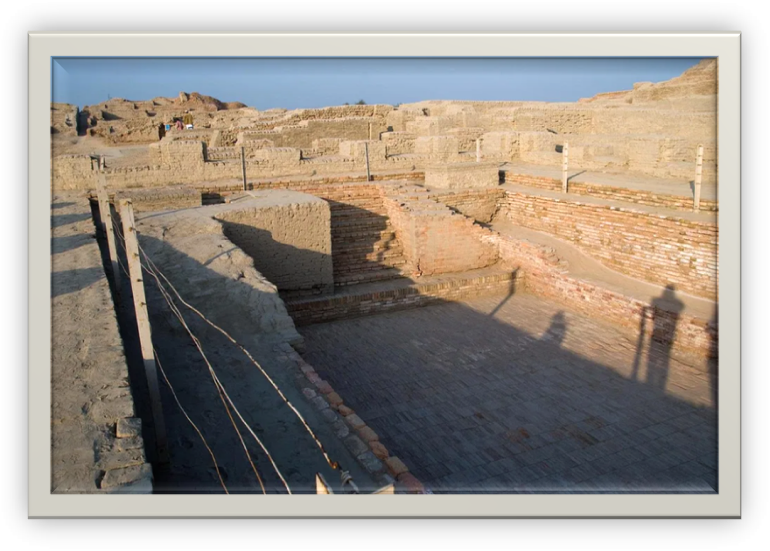
Chronology
Wheeler's study enabled archaeologists to determine approximate dates from the civilization's inception through its collapse and demise. As previously stated, the chronology is based mostly on physical evidence from Harappan sites, but also on knowledge of their trading links with Egypt and Mesopotamia. Lapis lazuli, for example, was hugely popular in both cultures, and while historians knew it came from India, they didn't know where until the Indus Valley Civilization was found. Even though this semi-precious stone was imported after the demise of the Indus Valley Civilization, it is obvious that some of the export came from this region at first.
Early Harappan - c. 5500-2800 BCE: Trade with Egypt, Mesopotamia, and possibly China is well established. Ports, docks, and warehouses built along waterways by tiny village settlements.
Mature Harappan - c. 2800 - c. 1900 BCE: Great city construction and extensive urbanisation. Both Harappa and Mohenjo-daro are flourishing around 2600 BCE. Other cities, such as Ganeriwala, Lothal, and Dholavira, are created on the same principles, and the land's expansion continues with the creation of hundreds more cities until there are over 1,000 in every direction.
Late Harappan - c. 1900 - c. 1500 BCE: Civilization decline coincided with a wave of Aryan migration from the north, most likely the Iranian Plateau. Climate change has caused flooding, drought, and hunger, according to physical evidence. A loss of commercial links with Egypt and Mesopotamia has also been proposed as a factor.
Post-Harappan - around 1500 - 600 BCE: The cities have been abandoned, and the inhabitants have gone south. By the time Cyrus II (the Great, r. c. 550-530 BCE) invades India in 530 BCE, the civilisation has already crumbled.
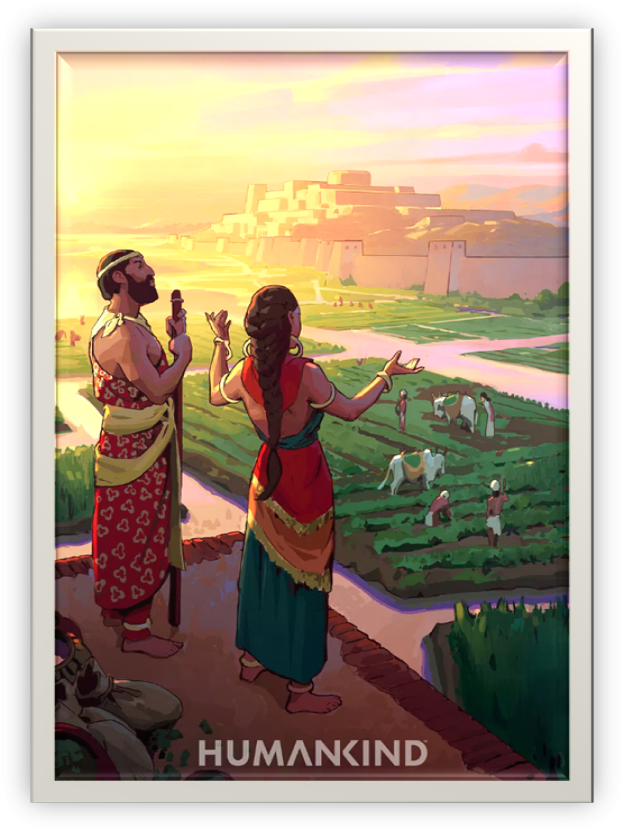
Aspects of Culture
The inhabitants appear to have been mostly artists, farmers, and merchants. There is no sign of a standing army, palaces, or temples. The Great Bath at Mohenjo-daro is thought to have been used for religious purifying rituals, but this is speculation; it might just as easily have been a public pool for amusement. Each city appears to have had its own ruler, but it is suggested that there must have been some type of centralised governance in order for the cities to be consistent. Commentary by John Keay:
Harappan tools, utensils, and materials confirm this impression of uniformity. Unfamiliar with iron – which was nowhere known in the third millennium BC – the Harappans sliced, scraped, beveled, and bored with 'effortless competence' using a standardized kit of tools made from chert, a kind of quartz, or from copper and bronze. These last, along with gold and silver, were the only metals available. They were also used for casting vessels and statuettes and for fashioning a variety of knives, fishhooks, arrowheads, saws, chisels, sickles, pins, and bangles. (10)
Among the hundreds of items recovered at the different sites are little, soapstone seals measuring slightly more than an inch (3 cm) in diameter, which archaeologists believe were used for personal identification in trade. These seals, like the Mesopotamian cylinder seals, are assumed to have been used to sign contracts, authorise land purchases, and validate the point-of-origin, shipping, and reception of commodities in long-distance commerce.
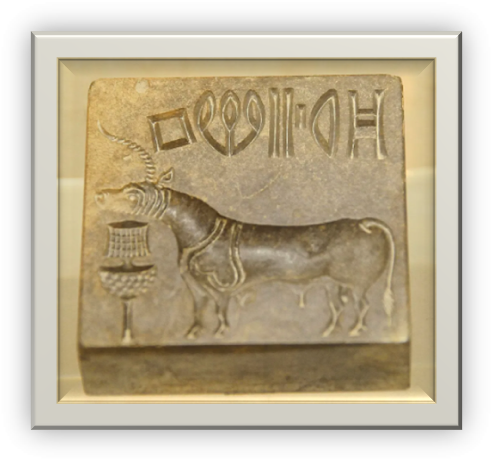
The wheel, carts carried by cattle, flat-bottomed vessels broad enough to convey trade items, and maybe the sail were all invented by the people. They comprehended and used irrigation systems and canals, numerous agricultural equipment, and built distinct regions for cattle grazing and crops in agriculture. Fertility rites may have been observed for a full harvest as well as female pregnancies, as demonstrated by a multitude of female figurines, amulets, and statuettes. It is assumed that the inhabitants worshipped a Mother Goddess goddess as well as a male consort represented as a horned figure surrounded by wild creatures. However, the culture's religious beliefs are unknown, therefore any ideas must be hypothetical.
Numerous findings of sculptures, soapstone seals, pottery, and jewellery demonstrate their degree of artistic mastery. The most renowned artwork is the bronze figurine known as "Dancing Girl," which is 4 inches (10 cm) tall and was discovered at Mohenjo-daro in 1926 CE. The painting depicts a teenage girl with her right hand on her hip and her left hand on her knee, her chin elevated as if analysing the claims of a suitor. An equally remarkable sculpture is the Priest-King, a 6 inch (17 cm) tall soapstone figure representing a bearded man wearing a headdress and decorative wristband.
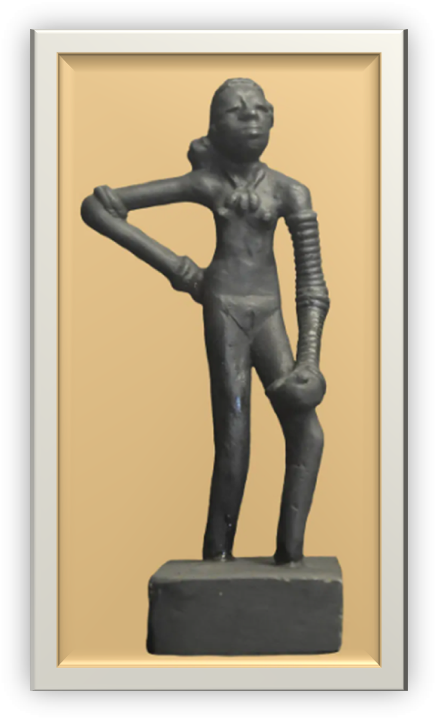
Decline & Aryan Invasion Theory
There is no conclusive answer to why the society faded and crumbled, just as there is none to what the seals were, what the "unicorn" symbolised, or how the people revered their gods. Between around 1900 and 1500 BCE, towns were gradually abandoned, and people went south. As previously said, there are several hypotheses on this, but none are totally satisfying. According to one account, the Gaggar-Hakra River, which is connected with the Sarasvati River in Vedic scriptures and flowed near to the Indus River, dried up around 1900 BCE, prompting a large migration of the people who relied on it. Significant silting at places like Mohenjo-daro implies catastrophic floods, which is also mentioned as a possible reason.
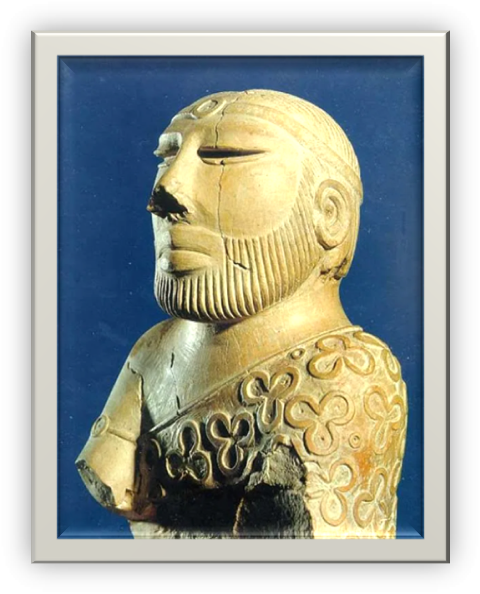
The assertion that the Indus Valley people had been overrun and forced south by an invasion of a superior race of light-skinned Aryans, however, was the rationale that early 20th century CE researchers latched on.
Aryan Invasion Theory
By the time Wheeler was excavating the sites, Western scholars had been translating and interpreting India's Vedic literature for over 200 years and had come to develop the theory that the subcontinent was conquered at some point by a light-skinned race known as Aryans who established high culture throughout the land. This hypothesis emerged gradually and innocently in 1786 CE with the publication of a paper by the Anglo-Welsh philologist Sir William Jones (l. 1746-1794 CE). Jones, an ardent reader of Sanskrit, noticed striking parallels between it and European languages and asserted that there had to be a common source for all of them; he dubbed this source Proto-Indo-European.
Later Western scholars, attempting to identify Jones' "common source," came to the conclusion that a light-skinned race from the north - somewhere around Europe - had conquered the lands south, notably India, establishing culture and spreading their language and customs, despite the fact that no objective evidence supported this view. In his work An Essay on the Inequality of the Human Races, published in 1855 CE, a French elitist writer named Joseph Arthur de Gobineau (l. 1816-1882 CE) promoted this concept, claiming that superior, light-skinned races possessed "Aryan blood" and were naturally motivated to reign over lower races.
The German musician Richard Wagner (l. 1813-1883 CE) liked Gobineau's book, and his British-born son-in-law, Houston Stewart Chamberlain (l. 1855-1927 CE), promoted similar beliefs in his work, which influenced Adolf Hitler and the creator of Nazi ideology, Alfred Rosenberg (l. 1893-1946 CE). These racialist beliefs were given more credence by a German philologist and academic who did not share them, Max Muller (l. 1823-1900 CE), the so-called "creator" of the Aryan Invasion Theory, who claimed throughout his work that Aryan had nothing to do with ethnicity.
It didn't matter what Muller claimed, since by the time Wheeler was excavating the sites in the 1940s CE, people had been breathing in these beliefs for well over 50 years. It would take decades for the majority of scholars, writers, and academics to recognise that the term 'Aryan' originally referred to a group of people who had nothing to do with race, and that, in the words of archaeologist J. P. Mallory, "as an ethnic designation, the word [Aryan] is most properly limited to the Indo-Iranians" (Farrokh, 17). The term "Aryan" was used by the early Iranians to indicate "noble," "free," or "civilised," and it was used for almost 2000 years until it was distorted by European racists to promote their own agenda.
The Aryan Invasion Theory informed and then supported Wheeler's assessment of the locations. The Aryans were already acknowledged as the writers of the Vedas and other writings, but their arrival in the region was too late to support the idea that they created the spectacular cities; nonetheless, they may have destroyed them. Wheeler was, of course, as aware of the Aryan Invasion Theory as any other archaeologist at the time and, through this lens, interpreted what he found as supporting it; in doing so, he validated the theory which then gained greater popularity and acceptance.
Conclusion
The Aryan Invasion Theory, though frequently used and advocated by some with a racialist goal, lost credibility in the 1960s CE due to the work of American archaeologist George F. Dales, who evaluated Wheeler's interpretations, visited the sites, and found no evidence to support it. The bones Wheeler had interpreted as having died violently in combat displayed no such symptoms, nor did the towns reveal any traces of war damage.
Furthermore, there was no indication of any form of mobilisation of a massive army from the north, nor of any conquest in India around 1900 BCE. Between around 1900 and approximately 1500 BCE, the Persians, the sole group self-identifying as Aryan, were a minority on the Iranian Plateau and were in no position to conduct any type of invasion. As a result, it was proposed that the "Aryan Invasion" was most likely a movement of Indo-Iranians who peacefully integrated with the indigenous people of India, intermarried, and were incorporated into the culture.
More knowledge will undoubtedly help to a better understanding of the Indus Valley Civilization's history and evolution as excavations of its sites continue. Recognition of the culture's tremendous achievements and high degree of technology and sophistication is progressively coming to light and gaining traction. "There is great intrigue with this civilisation because of its high degree of technical achievement," writes scholar Jeffrey D. Long (198). Already, the Indus Valley Civilization is recognised as one of the three greatest civilizations of antiquity, alongside Egypt and Mesopotamia, and future excavations will almost certainly raise its stature even higher.
These later names are derived from the Sarasvati River recorded in Vedic literature, which ran near to the Indus River, and the ancient city of Harappa in the area, the first discovered in the modern age. None of these names are derived from ancient documents because, despite the fact that academics think the inhabitants of this civilisation established a writing system (known as Indus Script or Harappan Script), it has not yet been decoded.
All three classifications are recent constructions, and nothing is certain about the civilization's birth, progress, decline, and demise. Nonetheless, contemporary archaeology has determined a possible chronology and periodization:
Pre-Harappan – c. 7000 - c. 5500 BCE
Early Harappan – c. 5500 - 2800 BCE
Mature Harappan – c. 2800 - c. 1900 BCE
Late Harappan – c. 1900 - c. 1500 BCE
Post Harappan – c. 1500 - c. 600 BCE
TOTAL POPULATION OF THE CIVILIZATION IS THOUGHT TO HAVE BEEN UPWARD OF 5 MILLION, & ITS TERRITORY STRETCHED OVER 900 MILES (1,500 KM) ALONG THE INDUS RIVER.
The Indus Valley Civilization is often frequently likened to the considerably more famous cultures of
Egypt and Mesopotamia, but this is a very recent phenomenon. The discovery of Harappa in 1829 CE was the first hint that such a civilisation existed in India, and by that time, Egyptian hieroglyphics had been decoded, Egyptian and Mesopotamian sites had been unearthed, and cuneiform would soon be translated by the scholar George Smith (l. 1840-1876 CE). Archaeological excavations of the Indus Valley Civilization began relatively late, and it is now recognised that many of the accomplishments and "firsts" credited to Egypt and Mesopotamia may really belong to the inhabitants of the Indus Valley Civilization.
The two most well-known excavated cities of this culture are Harappa and Mohenjo-daro (both in modern-day Pakistan), both of which are thought to have once had populations of 40,000-50,000 people, which is astounding when one considers that most ancient cities had an average population of 10,000 people. The civilization's entire population is estimated to have been over 5 million people, and its territory spread for nearly 900 miles (1,500 km) along the banks of the Indus River and then in all directions outward. Sites of the Indus Valley Civilization have been discovered near Nepal's border, in Afghanistan, on India's beaches, and in the vicinity of Delhi, to mention a few.
Between 1900 and around 1500 BCE, the civilisation began to decline for unknown causes. Western academics in the early twentieth century CE believed that this was caused by an invasion of light-skinned peoples from the north known as Aryans who conquered a dark-skinned people known as Dravidians. The Aryan Invasion Theory, as it is called, has been discredited. The Aryans, whose ethnicity is linked to the Iranian Persians, are now seen to have peacefully migrated to the region and integrated their culture with that of the locals, whereas the term Dravidian now refers to anybody, of any ethnicity, who speaks one of the Dravidian languages.
Scholars think climatic change, the drying up of the Sarasvati River, a shift in the route of the monsoon that irrigated crops, city overcrowding, a drop in commerce with Egypt and Mesopotamia, or a combination of the above, caused the decline and fall of the Indus Valley Civilization. Many of the sites uncovered thus far are still being excavated, and future finds may provide further information on the culture's history and decline.
Discovery & Early Excavation
The symbols and inscriptions on the items of the Indus Valley Civilization, which some experts have interpreted as a writing system, remain untranslated, and archaeologists generally avoid pinpointing the culture's origin because any attempt would be speculative. At the moment, all that is known about the society is based on concrete evidence unearthed in various locations. As a result, the storey of the Indus Valley Civilization begins in the nineteenth century CE with the discovery of its remnants.
When he left with another soldier in 1827 CE, James Lewis (better known as Charles Masson, l. 1800-1853 CE) was a British soldier serving in the East India Company Army's artillery. To avoid detection by authorities, he changed his name to Charles Masson and embarked on a series of excursions around India. Masson was an avid numismatist (coin collector) who was particularly fascinated in antique coins. After following various clues, he ended up exploring historical spots on his own. One of these sites was Harappa, which he found in 1829 CE. He appears to have left the region soon after noting it in his notes, but because he had no clue who may have built the city, he wrongly attributed it to Alexander the Great during his campaigns in India around 326 BCE.

Indus Valley Civilization - Mature Harappan Phase
Avantiputra7 (CC BY-SA)
Avantiputra7 (CC BY-SA)
When Masson returned to Britain after his adventures (and having been somehow forgiven his desertion), he published his book Narrative of Various Journeys in Balochistan, Afghanistan and the Punjab in 1842 CE which attracted the attention of the British authorities in India and, especially, Alexander Cunningham. Sir Alexander Cunningham (l. 1814-1893 CE), a British engineer in the country with a passion for ancient history, founded the Archaeological Survey of India (ASI) in 1861 CE, an organization dedicated to maintaining a professional standard of excavation and preservation of historic sites. Cunningham began excavations at the site in 1875 CE and published his interpretation (in which he recognised and called the Indus Script), but this was incomplete and lacked definition since Harappa remained isolated, with no connection to any known ancient culture that may have produced it.
In 1904 CE, a new director of the ASI was chosen, John Marshall (l. 1876-1958 CE), who subsequently visited Harappa and declared that the site constituted a previously undiscovered ancient civilisation. He ordered that the site be thoroughly excavated at the same time that he learned of another site some miles distant known as Mohenjo-daro ("the mound of the dead") because of animal and human bones discovered there, as well as other artefacts. Excavations at Mohenjo-daro began in 1924-1925, and commonalities between the two sites were identified; the Indus Valley Civilization had been discovered.
Harappa & Mohenjo-daro
Western scholars were already familiar with the Hindu literature known as the Vedas, as well as other important works of Indian tradition such as the Mahabharata and Ramayana, but they had no idea what culture had developed them. Systemic racism at the time prohibited them from attributing the achievements to the people of India, and this led researchers to believe that Harappa was a Mesopotamian Sumerian colony or maybe an Egyptian outpost.

Harappa
Muhammad Bin Naveed (CC BY-SA)
Muhammad Bin Naveed (CC BY-SA)
Harappa, on the other hand, did not adhere to either Egyptian or Mesopotamian architecture, since there was no trace of temples, palaces, or massive constructions, nor names of kings or queens, stelae, or regal statues. The city was built on 370 acres (150 hectares) of modest, brick homes with clay flat roofs. There was a citadel, walls, and the streets were set out in a grid pattern, obviously displaying a great degree of expertise in urban planning, and when the excavators compared the two sites, it was clear that they were dealing with a highly evolved civilisation.
Houses in both towns featured flush toilets, a sewage system, and fixtures on each side of the streets were part of a complex drainage system that was much more advanced than that of the early Romans. Wind catchers were installed to the rooftops of certain structures in Persia, providing air cooling for the residence or administrative office, and at Mohenjo-daro, there was a large public bath encircled by a courtyard with steps going down into it.
As other sites were discovered, the same level of sophistication and ability emerged, as did the realisation that all of these cities had been pre-planned. Unlike cities in other cultures, which often sprung from smaller, rural populations, the cities of the Indus Valley Civilization were planned, chosen, and purposely built before full habitation. Furthermore, they all demonstrated adherence to a unified vision, implying a powerful central government with an efficient bureaucracy capable of planning, funding, and building such cities. According to scholar John Keay:
The apparent resemblance of the several hundred Harappan sites currently known astounded all of these pioneers: "Our overriding impression is of cultural consistency, both during the several centuries during which the Harappan civilisation existed, and over the large territory it covered." Bricks, for example, have defined dimensions, as do the stone cubes used by the Harappans to measure weights, which are likewise conventional and based on the modular system. Streets are normally double the width of side lanes, whereas important arteries are twice or one and a half times the width of streets. The majority of the roadways dug thus far are straight and run either north-south.
Excavations at both sites proceeded between 1944 and 1948 CE under the guidance of British archaeologist Sir Mortimer Wheeler (l. 1890-1976 CE), whose racialist philosophy made accepting that dark-skinned people created the towns difficult. Despite this, he was able to construct stratigraphy for Harappa and set the groundwork for the Indus Valley Civilization's eventual periodization.

Great Bath, Mohenjo-daro
Benny Lin (CC BY-NC)
Benny Lin (CC BY-NC)
Chronology
Wheeler's study enabled archaeologists to determine approximate dates from the civilization's inception through its collapse and demise. As previously stated, the chronology is based mostly on physical evidence from Harappan sites, but also on knowledge of their trading links with Egypt and Mesopotamia. Lapis lazuli, for example, was hugely popular in both cultures, and while historians knew it came from India, they didn't know where until the Indus Valley Civilization was found. Even though this semi-precious stone was imported after the demise of the Indus Valley Civilization, it is obvious that some of the export came from this region at first.
Pre-Harappan - about 7000 - approximately 5500 BCE: The Neolithic period is best typified by sites such as Mehrgarh, which reveal evidence of agricultural development, domestication of plants and animals, and manufacturing of tools and pottery.
Early Harappan - c. 5500-2800 BCE: Trade with Egypt, Mesopotamia, and possibly China is well established. Ports, docks, and warehouses built along waterways by tiny village settlements.
Mature Harappan - c. 2800 - c. 1900 BCE: Great city construction and extensive urbanisation. Both Harappa and Mohenjo-daro are flourishing around 2600 BCE. Other cities, such as Ganeriwala, Lothal, and Dholavira, are created on the same principles, and the land's expansion continues with the creation of hundreds more cities until there are over 1,000 in every direction.
Late Harappan - c. 1900 - c. 1500 BCE: Civilization decline coincided with a wave of Aryan migration from the north, most likely the Iranian Plateau. Climate change has caused flooding, drought, and hunger, according to physical evidence. A loss of commercial links with Egypt and Mesopotamia has also been proposed as a factor.
Post-Harappan - around 1500 - 600 BCE: The cities have been abandoned, and the inhabitants have gone south. By the time Cyrus II (the Great, r. c. 550-530 BCE) invades India in 530 BCE, the civilisation has already crumbled.

Harappan Civilization (Artist's Impression)
Amplitude Studios (Copyright)
Amplitude Studios (Copyright)
Aspects of Culture
The inhabitants appear to have been mostly artists, farmers, and merchants. There is no sign of a standing army, palaces, or temples. The Great Bath at Mohenjo-daro is thought to have been used for religious purifying rituals, but this is speculation; it might just as easily have been a public pool for amusement. Each city appears to have had its own ruler, but it is suggested that there must have been some type of centralised governance in order for the cities to be consistent. Commentary by John Keay:
Harappan tools, utensils, and materials confirm this impression of uniformity. Unfamiliar with iron – which was nowhere known in the third millennium BC – the Harappans sliced, scraped, beveled, and bored with 'effortless competence' using a standardized kit of tools made from chert, a kind of quartz, or from copper and bronze. These last, along with gold and silver, were the only metals available. They were also used for casting vessels and statuettes and for fashioning a variety of knives, fishhooks, arrowheads, saws, chisels, sickles, pins, and bangles. (10)
Among the hundreds of items recovered at the different sites are little, soapstone seals measuring slightly more than an inch (3 cm) in diameter, which archaeologists believe were used for personal identification in trade. These seals, like the Mesopotamian cylinder seals, are assumed to have been used to sign contracts, authorise land purchases, and validate the point-of-origin, shipping, and reception of commodities in long-distance commerce.

Unicorn Seal - Indus Script
Mukul Banerjee (Copyright)
Mukul Banerjee (Copyright)
The wheel, carts carried by cattle, flat-bottomed vessels broad enough to convey trade items, and maybe the sail were all invented by the people. They comprehended and used irrigation systems and canals, numerous agricultural equipment, and built distinct regions for cattle grazing and crops in agriculture. Fertility rites may have been observed for a full harvest as well as female pregnancies, as demonstrated by a multitude of female figurines, amulets, and statuettes. It is assumed that the inhabitants worshipped a Mother Goddess goddess as well as a male consort represented as a horned figure surrounded by wild creatures. However, the culture's religious beliefs are unknown, therefore any ideas must be hypothetical.
Numerous findings of sculptures, soapstone seals, pottery, and jewellery demonstrate their degree of artistic mastery. The most renowned artwork is the bronze figurine known as "Dancing Girl," which is 4 inches (10 cm) tall and was discovered at Mohenjo-daro in 1926 CE. The painting depicts a teenage girl with her right hand on her hip and her left hand on her knee, her chin elevated as if analysing the claims of a suitor. An equally remarkable sculpture is the Priest-King, a 6 inch (17 cm) tall soapstone figure representing a bearded man wearing a headdress and decorative wristband.

Dancing Girl of Mohenjo-daro
Joe Ravi (CC BY-SA)
The presence of what appears to be a unicorn on over 60% of the personal seals is a particularly intriguing component of the artwork. There are many diverse images on these seals, but the unicorn occurs on "1156 seals and sealings out of a total of 1755 identified at Mature Harappan sites," according to Keay (17). He also mentions that the seals, regardless of the picture on them, include marks that have been interpreted as Indus Script, implying that the "writing" has a message apart from the image. The "unicorn" might have signified a person's family, clan, city, or political allegiance, as well as the "writing" of personal information.Joe Ravi (CC BY-SA)
Decline & Aryan Invasion Theory
There is no conclusive answer to why the society faded and crumbled, just as there is none to what the seals were, what the "unicorn" symbolised, or how the people revered their gods. Between around 1900 and 1500 BCE, towns were gradually abandoned, and people went south. As previously said, there are several hypotheses on this, but none are totally satisfying. According to one account, the Gaggar-Hakra River, which is connected with the Sarasvati River in Vedic scriptures and flowed near to the Indus River, dried up around 1900 BCE, prompting a large migration of the people who relied on it. Significant silting at places like Mohenjo-daro implies catastrophic floods, which is also mentioned as a possible reason.

Priest-king from Mohenjo-daro
Mamoon Mengal (CC BY-SA)
Another risk is a decrease in essential trade items. Both Mesopotamia and Egypt were having problems at the same time, which may have caused a substantial interruption in commerce. The Late Harappan Period roughly corresponds with the Middle Bronze Age in Mesopotamia (2119-1700 BCE), when the Sumerians - the Indus Valley's major trading partners - were engaged in driving out the Gutian invaders and, between c. 1792-1750 BCE, the Babylonian king Hammurabi was conquering their city-states as he consolidated his empire. In Egypt, the period corresponds to the later portion of the Middle Kingdom (2040-1782 BCE), when the weak 13th Dynasty governed immediately prior to the arrival of the Hyksos and the loss of power and authority of the central government.Mamoon Mengal (CC BY-SA)
The assertion that the Indus Valley people had been overrun and forced south by an invasion of a superior race of light-skinned Aryans, however, was the rationale that early 20th century CE researchers latched on.
Aryan Invasion Theory
By the time Wheeler was excavating the sites, Western scholars had been translating and interpreting India's Vedic literature for over 200 years and had come to develop the theory that the subcontinent was conquered at some point by a light-skinned race known as Aryans who established high culture throughout the land. This hypothesis emerged gradually and innocently in 1786 CE with the publication of a paper by the Anglo-Welsh philologist Sir William Jones (l. 1746-1794 CE). Jones, an ardent reader of Sanskrit, noticed striking parallels between it and European languages and asserted that there had to be a common source for all of them; he dubbed this source Proto-Indo-European.
Later Western scholars, attempting to identify Jones' "common source," came to the conclusion that a light-skinned race from the north - somewhere around Europe - had conquered the lands south, notably India, establishing culture and spreading their language and customs, despite the fact that no objective evidence supported this view. In his work An Essay on the Inequality of the Human Races, published in 1855 CE, a French elitist writer named Joseph Arthur de Gobineau (l. 1816-1882 CE) promoted this concept, claiming that superior, light-skinned races possessed "Aryan blood" and were naturally motivated to reign over lower races.
|
THE EARLY IRANIANS SELF-IDENTIFIED AS ARYAN, MEANING “NOBLE” OR “FREE” OR “CIVILIZED”, UNTIL IT WAS CORRUPTED BY EUROPEAN RACISTS TO SERVE THEIR OWN AGENDA.
|
The German musician Richard Wagner (l. 1813-1883 CE) liked Gobineau's book, and his British-born son-in-law, Houston Stewart Chamberlain (l. 1855-1927 CE), promoted similar beliefs in his work, which influenced Adolf Hitler and the creator of Nazi ideology, Alfred Rosenberg (l. 1893-1946 CE). These racialist beliefs were given more credence by a German philologist and academic who did not share them, Max Muller (l. 1823-1900 CE), the so-called "creator" of the Aryan Invasion Theory, who claimed throughout his work that Aryan had nothing to do with ethnicity.
It didn't matter what Muller claimed, since by the time Wheeler was excavating the sites in the 1940s CE, people had been breathing in these beliefs for well over 50 years. It would take decades for the majority of scholars, writers, and academics to recognise that the term 'Aryan' originally referred to a group of people who had nothing to do with race, and that, in the words of archaeologist J. P. Mallory, "as an ethnic designation, the word [Aryan] is most properly limited to the Indo-Iranians" (Farrokh, 17). The term "Aryan" was used by the early Iranians to indicate "noble," "free," or "civilised," and it was used for almost 2000 years until it was distorted by European racists to promote their own agenda.
The Aryan Invasion Theory informed and then supported Wheeler's assessment of the locations. The Aryans were already acknowledged as the writers of the Vedas and other writings, but their arrival in the region was too late to support the idea that they created the spectacular cities; nonetheless, they may have destroyed them. Wheeler was, of course, as aware of the Aryan Invasion Theory as any other archaeologist at the time and, through this lens, interpreted what he found as supporting it; in doing so, he validated the theory which then gained greater popularity and acceptance.
Conclusion
The Aryan Invasion Theory, though frequently used and advocated by some with a racialist goal, lost credibility in the 1960s CE due to the work of American archaeologist George F. Dales, who evaluated Wheeler's interpretations, visited the sites, and found no evidence to support it. The bones Wheeler had interpreted as having died violently in combat displayed no such symptoms, nor did the towns reveal any traces of war damage.
Furthermore, there was no indication of any form of mobilisation of a massive army from the north, nor of any conquest in India around 1900 BCE. Between around 1900 and approximately 1500 BCE, the Persians, the sole group self-identifying as Aryan, were a minority on the Iranian Plateau and were in no position to conduct any type of invasion. As a result, it was proposed that the "Aryan Invasion" was most likely a movement of Indo-Iranians who peacefully integrated with the indigenous people of India, intermarried, and were incorporated into the culture.
More knowledge will undoubtedly help to a better understanding of the Indus Valley Civilization's history and evolution as excavations of its sites continue. Recognition of the culture's tremendous achievements and high degree of technology and sophistication is progressively coming to light and gaining traction. "There is great intrigue with this civilisation because of its high degree of technical achievement," writes scholar Jeffrey D. Long (198). Already, the Indus Valley Civilization is recognised as one of the three greatest civilizations of antiquity, alongside Egypt and Mesopotamia, and future excavations will almost certainly raise its stature even higher.
All three classifications are recent constructions, and nothing is certain about the civilization's birth, progress, decline, and demise. Nonetheless, contemporary archaeology has determined a possible chronology and periodization: